A loader refers to a type of heavy equipment used primarily for moving or loading materials like rock, soil, sand, and construction debris on the job site. With so many construction tools and different types of heavy equipment, it’s easy to mix up the different types of loaders available, including backhoes, skid steers, dozers, and wheel loaders. We’ll explain the different types of loaders and their primary uses.
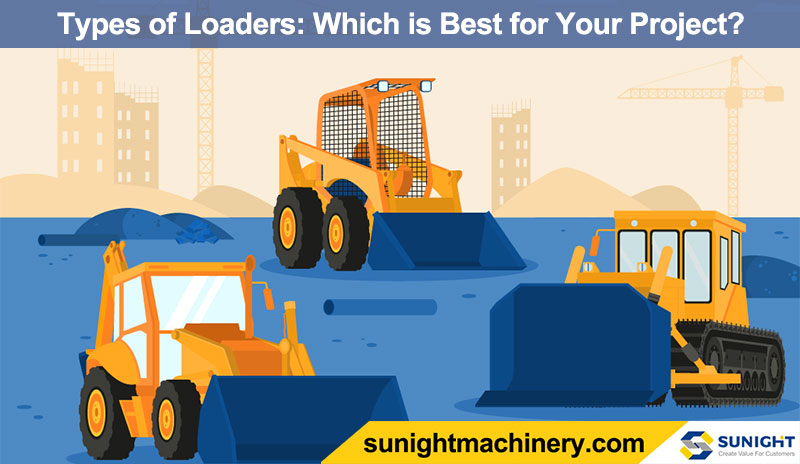
Backhoe Loader
A backhoe loader has a small frame, so you can work with precision to perform a variety of tasks on a construction site or for a job of any size. Backhoes can excavate, scoop, and move materials. When you add in the capabilities of the attachments, you can get even more accomplished with just one machine.
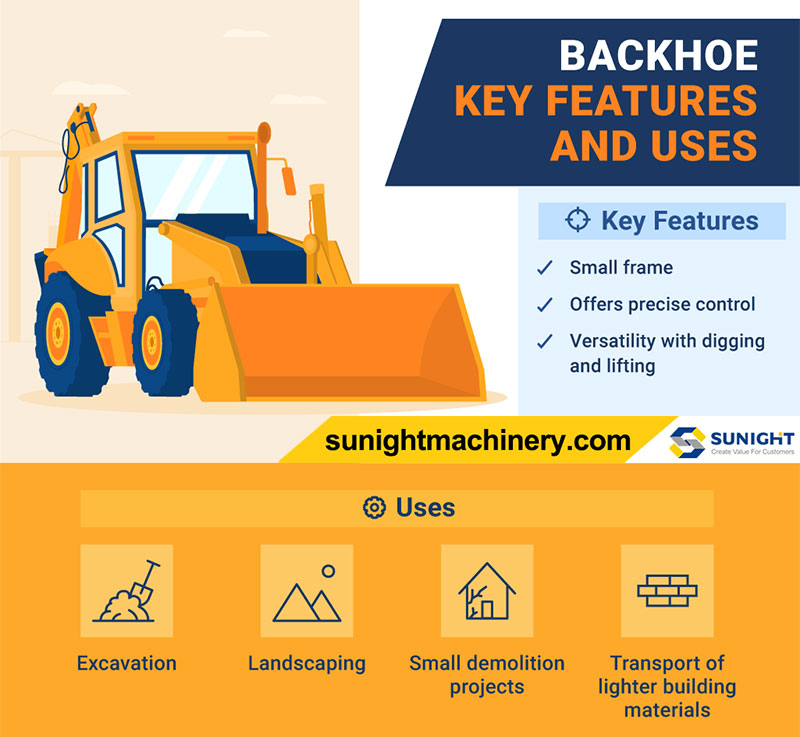
Backhoe Uses
- Landscaping: You can use a backhoe for landscaping projects like digging holes, moving pavers, and clearing debris.
- Excavating: You may wonder whether you need an excavator if you have excavating to do, but a backhoe may work just as well. You can use a backhoe to dig a trench, and then use the loader to backfill it. You can also grade areas such as yards or roads and then use the backhoe to load the excess into trucks.
- Construction: Whether you need to dig around utilities, break up concrete, move materials, or clean up a site, a backhoe is a multitasking machine. You can drive a backhoe on the road, so it is handy if you have needs across several different construction sites.
- Farming: As with landscaping, the backhoe’s numerous attachments can be effective for farming projects. This machine can do everything from hauling bales of hay to digging fence post holes to tilling and preparing the soil for planting.
Backhoe Attachments
The versatility of a backhoe expands even further with attachments like the following:
- Bucket: You can use a bucket to move heavy items across the job site or load dirt and pile it somewhere else.
- Breaker/hammer: A breaker or hammer uses a sharp, straight piece of metal to break up hard ground. This attachment makes it easier to dig and move dirt as needed.
- Stump grinder: When you need to clear trees, the stump grinder attachment makes it easier.
- Grapple: A grapple attachment looks like a large claw. It can clamp down on items to keep them from falling as the driver moves the backhoe.
Skid Steer
A skid steer loader has more available attachments than any other loader, making it one of the most useful pieces of construction equipment for residential and commercial jobs. Because a skid loader is mounted on wheels, it easily navigates rough, uneven ground on a construction site.
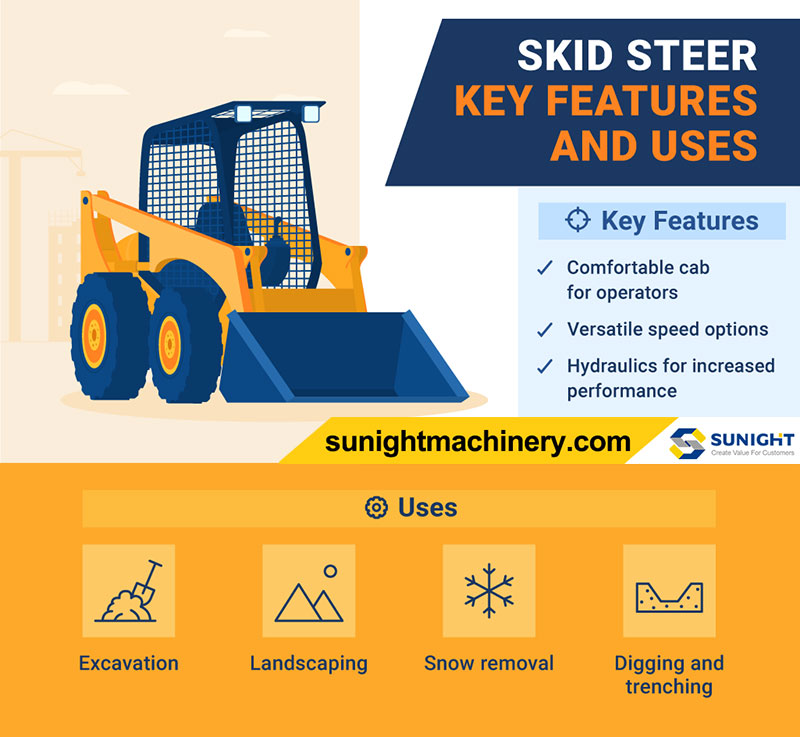
Types of Skid Steers
Skid steers are categorized into small, medium, and large-frame. When choosing the best skid steer for your job, consider your maneuverability, load, and power needs.
- Small-frame skid steer: 1,300 to 1,750 pounds; 50 horsepower
- Medium-frame skid steer: 1,750 to 2,200 pounds; 50 to 70 horsepower
- Large-frame skid steer: over 2,200 pounds more than 70 horsepower
Skid Steer Uses
Skid steer loaders make easy work of site development, grading, demolition and more. Use a skid steer if you need to perform:
- Snow removal: Skid steers can use a bucket attachment or blade attachment to lift, transport, and remove snow.
- Trenching and digging: You can use attachments like augers, backhoes, or trench-diggers for all sorts of digging or trenching tasks.
- Excavation: Attachments like rippers, tillers, tree spades, and stump grinders, aid in excavation for speedy clearing and cleaning up of construction sites or landscape areas.
Skid Steer Attachments
From boring holes to clearing construction sites, you can use the following skid steer attachments to enhance the many jobs a skid steer can perform:
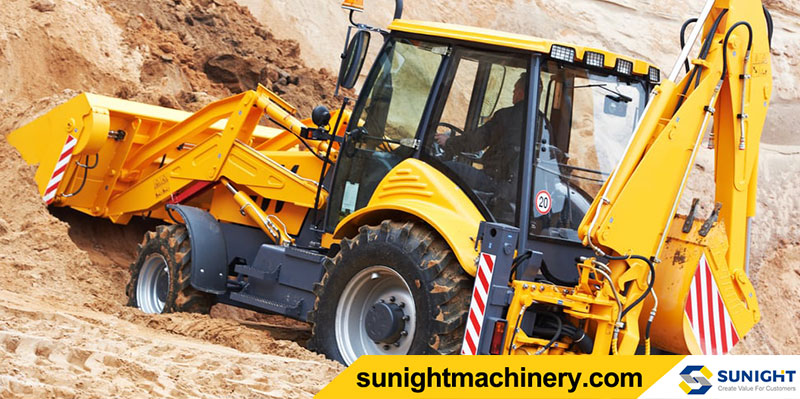
- Auger: The corkscrew-shaped auger rotates to dig a precise hole. Auger bits of varying sizes allow you to dig at different depths.
- Bucket: Buckets allow you to move building materials, soil, and various pieces of equipment. You can select from a variety of bucket capacities and sizes.
- Dozer blade: Useful for plowing, grading, and pushing heavy material, you can find a blade size perfect for any project.
- Backhoe: The backhoe attachment helps you dig trenches.
- Bale spear: Bales spears allow you to spear, lift, and move bales of hay. Some can handle different-shaped bales, whether they’re square, rectangular, or round.
- Brush chippers and mulcher: Allow you to mulch branches or stumps for groundcover or easier removal.
- Rock saw: This attachment can cut through asphalt and concrete.
- Snowblower: Clears snow from parking lots and roads.
- Broom: Also called a sweeper, a broom has heavy-duty poly or steel bristles that can be used to clear debris from sidewalks, docks, parking lots, warehouse floors, and other areas.
- Trencher: Trenchers can dig straight, narrow trenches in various depths, depending on the attachment size you select.
- Pallet fork: Pallet forks can lift and stack pallets or other material. Rather than renting a forklift, you can just add this attachment to your skid steer.
Bulldozer
Often referred to as a "dozer," you use a bulldozer to clear the ground. This compact but powerful tractor with an upright blade attached to the front can move sand, soil, and other debris generated by a construction project. A bulldozer has large tracks to grip the ground without slipping. These tracks help distribute the dozer’s weight, reducing the pressure put on the ground so that the machine remains on top, even in sandy conditions.
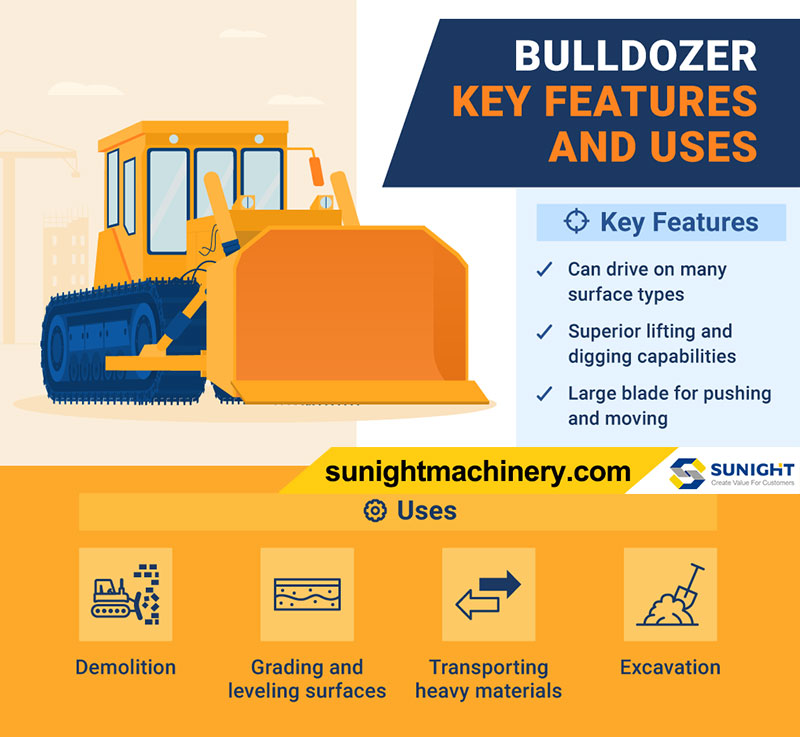
Types of Dozers
Consider the terrain you’re working on, needed maneuverability, and the scope of your project when selecting which type of dozer you need.
- Crawler: Sometimes known as a track bulldozer, this heavy-duty dozer can crawl over uneven terrain.
- Wheel: Typically bigger than a crawler but more maneuverable, wheel dozers work well for leveling and grading on soft surfaces, such as stadiums.
- Mini: This compact dozer offers greater maneuverability in tight spaces, ideal for residential projects.
Bulldozer Uses
When it comes to moving or shoving materials out of the way, the dozer has many uses on your project site, including:
- Grading: Dozers can grade a site, prepping the area for building or landscaping.
- Clearing: A dozer’s blade can clear away debris, brush, rocks, and other materials.
- Snow removal: The blade can clear snow from roads, parking lots, or driveways.
- Backfilling: You can use a dozer to backfill an area that’s already been excavated.
Bulldozer Attachments
A dozer has two main parts: the ripper and blade. The ripper, situated at the back of the dozer, has at least one shank that rips the earth to make it softer. You can use a dozer ripper to prepare the ground for landscaping or pouring a foundation.
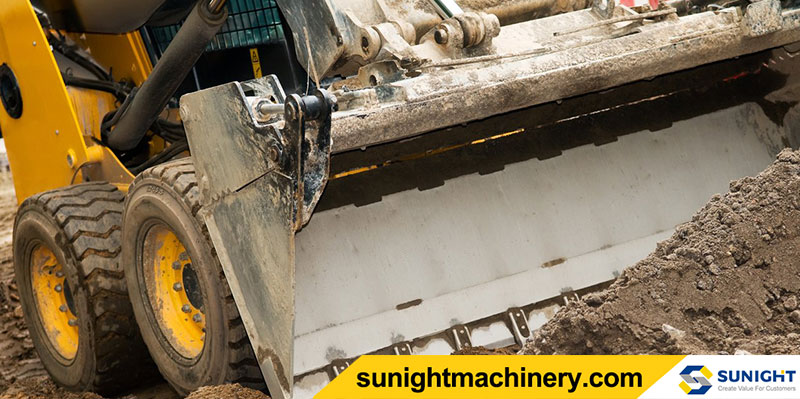
The blade sits at the front of the dozer, ready to move and shove material around the site. Consider how you want to use the dozer so you can select the right blade from the following list for your project:
- Straight blade: Also known as an S-blade, the straight blade works best for stripping and ditching. It works well for fine-grained and medium- to hard-density material.
- Universal blade: U-blades can push material over long stretches. Its wings keep what’s being pushed from spilling out while moving. The U-blade works best for soft to medium soil.
- Semi-U blade: Also referred to as an S-U blade, this blade performs tasks like crowning, stumping, ditching, and backfilling. Combining the best of the S- and U-blades, the S-U blade is narrower with smaller side wings than a U-blade and works best for soft to medium soil.
- Angle blade: This two-way, wingless blade can move push material 30 degrees to the left or right. It can be used for tasks like stumping, ditching, and earthmoving.
- Power-Angle-Tilt (PAT) blade: A good choice for clearing, grading, scraping, or leveling land, as well as backfilling, this blade provides the most versatile choice for medium to hard soils.
Wheel loaders can handle heavy-duty jobs easily. Also called bucket loaders or front-end loaders, wheel loaders offer versatility with a large capacity for a variety of different tasks, including building roads, preparing the job site, digging, carrying heavy loads, or moving construction materials like dirt or debris. Newer wheel loaders have advanced drivetrain technology for improved durability and toughness.
Types of Wheel Loaders
Like side steers, wheel loaders come in multiple sizes. Consider bucket capacity, operating weight, and power needs when choosing the correct size.
- Compact wheel loader
- Small wheel loader
- Medium wheel loader
- Large wheel loader
Wheel Loader Uses
This heavy-duty piece of equipment can be used in a variety of ways and settings, including:
- Transporting material: A wheel loader can move building materials, piping, hay bales, feed, trash, and more.
- Clearing debris: This machine makes an excellent choice for clearing debris such as sand, stones, and bricks to prepare areas on a job site.
- Logging: Wheel loaders can move or remove timber at a logging site after trees have been pruned or cut.
- Quarrying: Rocks and earth from mining sites can be removed using a wheel loader.
Wheel Loader Attachments
You can expand the versatility of a wheel loader by including attachments, such as:
- Auger: This cyclone-shaped attachment moves in a circle to bore a hole into the ground.
- Broom: A broom attachment can sweep debris, branches, and more out of the way.
- Lifting jib: This attachment can be used for lifting and positioning materials instead of using a crane.
- Rake: A rake attachment has steel teeth that can not only snag branches, logs, sticks, brush, but also easily dig into tall trees.
- Shovel: Shovel attachments can be used for lifting, moving, and loading loose material like gravel and sand.
- Grappler: Grapplers (or grapples) can be used to clamp down on items of various sizes and keep them firmly in place as you maneuver the loader.





